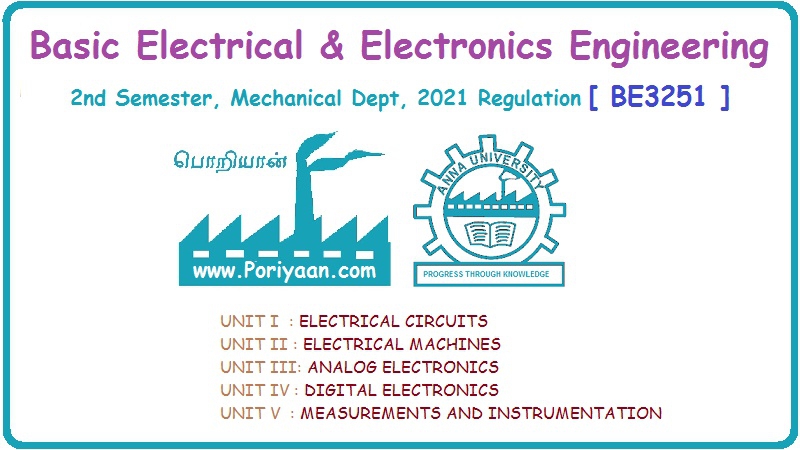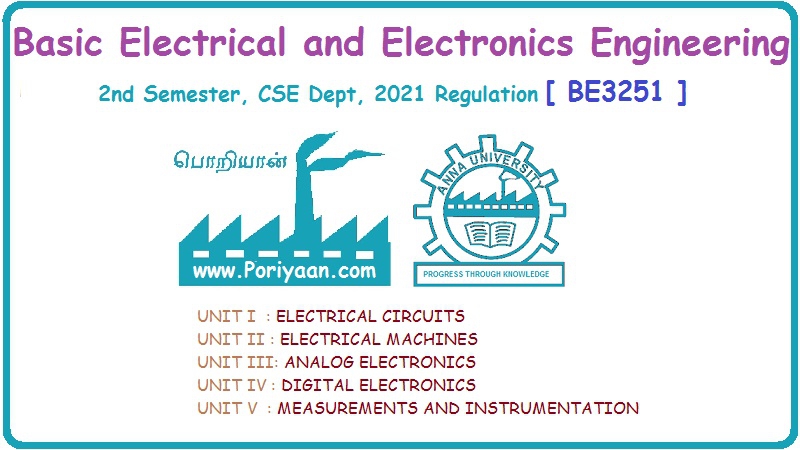Basic Electrical and Electronics Engineering: Unit II: Electrical Machines
Losses in a Transformer
The transformer is a static device, there are no friction (or) windage losses. Then losses occurs are (i) Core (or) iron loss,(ii) Copper loss
LOSSES
IN A TRANSFORMER
The
transformer is a static device, there are no friction (or) windage losses. Then
losses occurs are
(i) Core (or) iron loss
(ii)
Copper loss
Core (or) iron loss
It
includes both hysteresis loss and eddy current loss. Because the core flux in a
transformer remains practically constant for all loads. The core loss is
practically the same at all loads.
Hysteresis
loss wh = ɳβmax1.6ƒV watts
Eddy
current loss we = Pβmax2 ƒ2 t2
watts
These
losses are minimized by using steel of high silicon content for the core and by
using very thin laminations. The iron (or) core loss is found from the open
circuit test.
Copper loss:
This
loss is due to the ohmic resistance of the transformer windings. Total Cu loss
= I12R1 + I2R2 = I12R01
+ I22R02.It is clear that Cu loss
is proportional to (current)2. The copper loss is found from the
short-circuit test.
Efficiency
of a transformer:
The
efficiency of a transformer at a particular load and power factor is defined as
the output divided by the input.
Efficiency
= Output/Input
(or)
Efficiency
= output/output + losses
Basic Electrical and Electronics Engineering: Unit II: Electrical Machines : Tag: : - Losses in a Transformer
Related Topics
Related Subjects
Basic Electrical and Electronics Engineering
BE3251 2nd semester Mechanical Dept | 2021 Regulation | 2nd Semester Mechanical Dept 2021 Regulation
Basic Electrical and Electronics Engineering
BE3251 2nd Semester CSE Dept 2021 | Regulation | 2nd Semester CSE Dept 2021 Regulation

